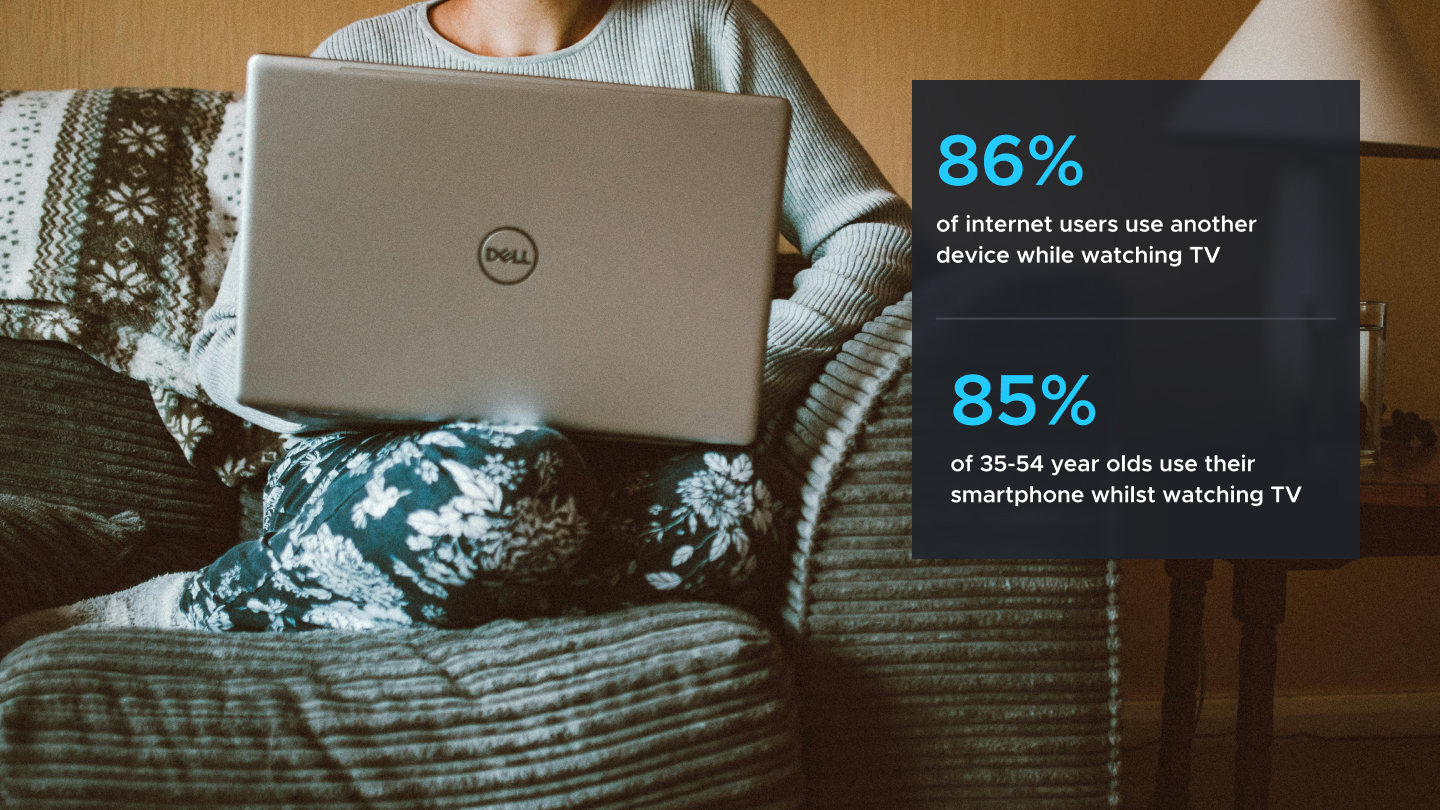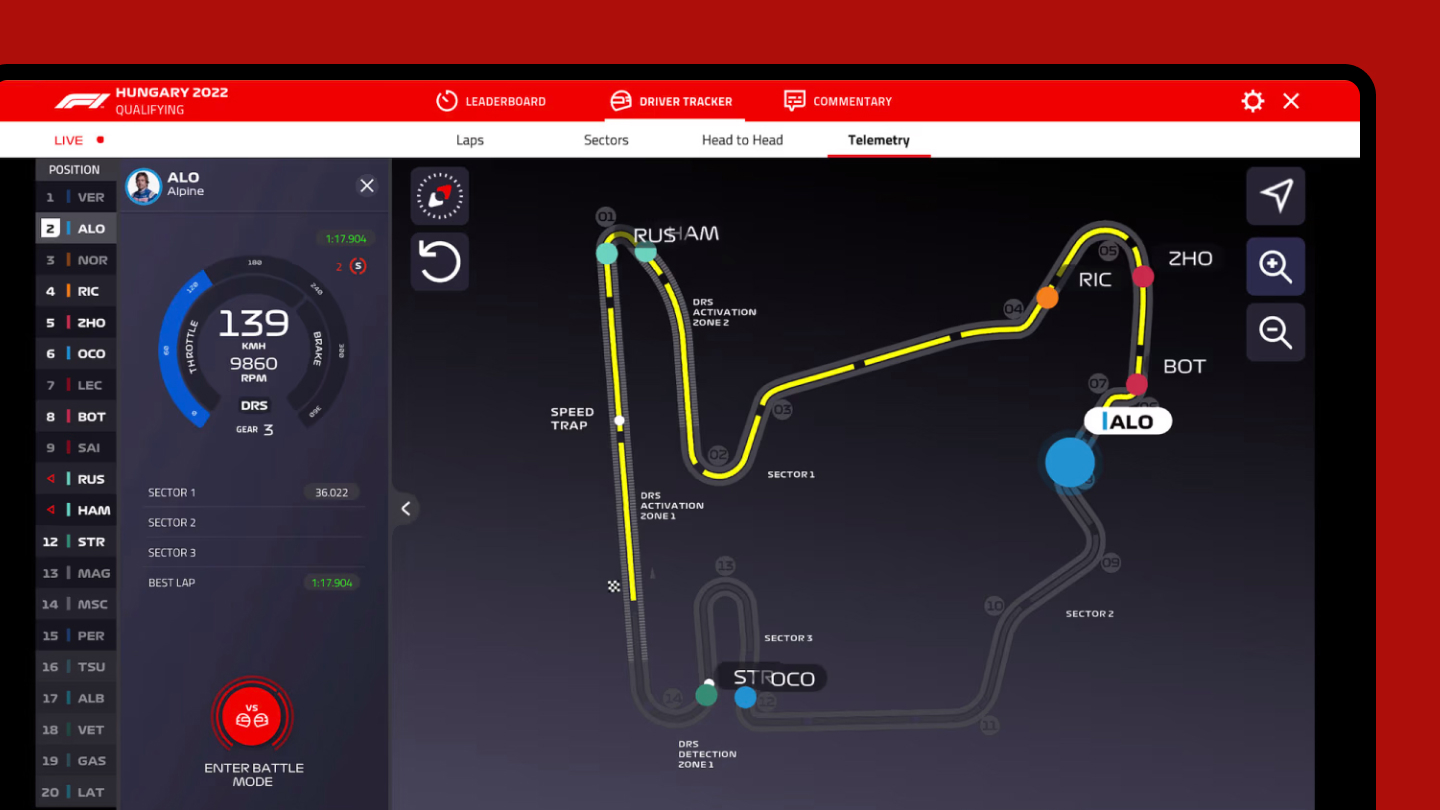The Power of Second-Screen Engagement


The evolution of media consumption has ushered in an era where audiences are more connected than ever. The practice of second-screen behaviour—using an additional device while watching TV—has become standard. This shift presents both significant opportunities and challenges for broadcasters and advertisers looking to capture and maintain viewer attention in a saturated digital environment
The Rise of Second-Screen Usage
Second-screen behaviour is no longer just an emerging trend; it’s a hallmark of modern media consumption. A significant portion of internet users now report using another device while watching TV, showcasing how this behaviour is pervasive across generations. Although it is most prevalent among younger viewers who are more accustomed to multitasking, even those aged 35-54 engage in this simultaneous media use.

This behaviour extends beyond mere entertainment. Viewers are using secondary screens to search for additional content, connect with friends on social media, and explore products seen in commercials or TV shows. This multifaceted engagement underscores a significant shift in how audiences consume and interact with media, making second-screen integration a key strategy for broadcasters aiming to remain relevant and competitive.

Enhanced Engagement Through Integrated Content
Second screens open a pathway to transform traditional, passive TV watching into an interactive experience. For example, certain popular shows have utilized second-screen apps to introduce real-time participation features such as quizzes and voting. These tools have been shown to increase viewer engagement and boost ad responsiveness significantly. This approach enriches the viewing experience and heightens users’ connection to both the show and its advertising partners.

Similarly, events like international sports broadcasts have leveraged second-screen apps that offer real-time statistics, athlete profiles, and interactive features, keeping users engaged beyond the primary TV broadcast. This approach has proven to drive significant user involvement and advertising revenue, demonstrating how second-screen strategies can extend audience involvement and monetisation.

Balancing Challenges and Maximizing Benefits
Although the advantages of second-screen use are numerous, advertisers and broadcasters face challenges such as potential cognitive overload. The simultaneous use of multiple screens can sometimes fragment viewer attention, impacting the retention of information from the primary screen. Research indicates that while brand recall might dip under these conditions, recognition often stays robust, especially when interactive elements are integrated effectively.
To mitigate these challenges, well-designed second-screen experiences are crucial. Techniques like gamification and synchronised advertising can encourage focus and engagement. Studies have shown that gamified ad experiences can significantly elevate interaction rates, turning potential distractions into opportunities for meaningful audience interaction.
Moreover, the dual-screen dynamic promotes immediate user actions, such as looking up products and brands featured on TV. A notable portion of users engage in product research spurred by TV content, and many viewers discover brands through pre-show ads. These behaviors reinforce the ability of second-screen strategies to seamlessly bridge passive consumption and active consumer responses, enhancing advertising impact and ROI.

The Role of Social Interaction and Product Research
Second-screen behaviour is not limited to passive viewing; it often involves active social interaction and product research. Reports indicate that interactive viewers frequently leverage their devices to discuss TV shows, post opinions, or search for information about featured products and services. This behaviour highlights the dual role of second screens as tools for both entertainment and exploration.
Social networks, in particular, play a significant role in this interaction, with many viewers using these platforms for product research. This trend underscores a powerful shift in how brands can reach consumers—through platforms that facilitate both social interaction and targeted advertising.

Leveraging First-Party Data: A Strategic Advantage
An often overlooked yet critical benefit of second-screen experiences is the ability to gather first-party data. This advantage is particularly valuable in scenarios like FAST channel broadcasting, where audience engagement is typically anonymous. Interactive features such as in-app voting, exclusive content, and quizzes encourage users to register and sign in, transforming them from anonymous viewers to data-rich profiles that broadcasters and advertisers can analyse.
For example, certain quiz shows have used apps to engage a significant number of unique players during single episodes. This level of engagement not only enriches the viewer experience but also provides valuable first-party data that can be used for personalized content delivery and targeted marketing. This strategy is essential for navigating the evolving landscape of data privacy and third-party cookie restrictions, positioning first-party data as a critical asset for long-term sustainability.
Case Studies Highlighting Success

Britain’s Got Talent
ITV’s ‘Britain’s Got Talent’ app provided viewers with interactive features such as quizzes and voting during live broadcasts. Research indicated that the app users showed enhanced engagement and receptiveness to advertising.
- 43% Increase in brain response to in app ads vs TV ads
- 23% Increase in brain response to TV sponsor idents for app vs non-app users
- 16% Improvement in TV experience

What Do I Know?
What Do I Know?! is a prime time, general knowledge quiz that has reached more than 20 million unique users across Europe.
In France, the What Do I Know app, integrated in the OTT app, successfully drove installs and registrations for their platform.
- 500,000 unique players for a single episode
- 20% of viewers played along

The Voice (Australia)
The dedicated app for talent show “The Voice,” enabled viewers to vote for contestants, participate in real-time polls, and access behind-the-scenes content during live broadcasts. The app achieved remarkable success and boosted audience engagement.
- 1.2 million App downloads
- 3.5 million Votes cast across the series
- 5.2 million Live in-app interactions
Conclusion
Second-screen experiences are redefining how audiences engage with televised content, turning what was once a passive experience into an interactive, data-driven event.
Broadcasters and advertisers who strategically implement synchronised and engaging second-screen elements can enhance viewer participation, amplify advertising effectiveness, and collect invaluable first-party data. As this trend continues to shape media consumption, adopting comprehensive second-screen strategies will be crucial for staying ahead in the competitive broadcasting landscape.


